The ability of centipede grass to grow in hot climates and its low requirements for upkeep has made it a popular choice for use in yards. It is distinguished by its compact growth pattern as well as its preference for sandy or well-drained soil. In addition, it has a verdant, light green color which can give your home a very luxurious look.
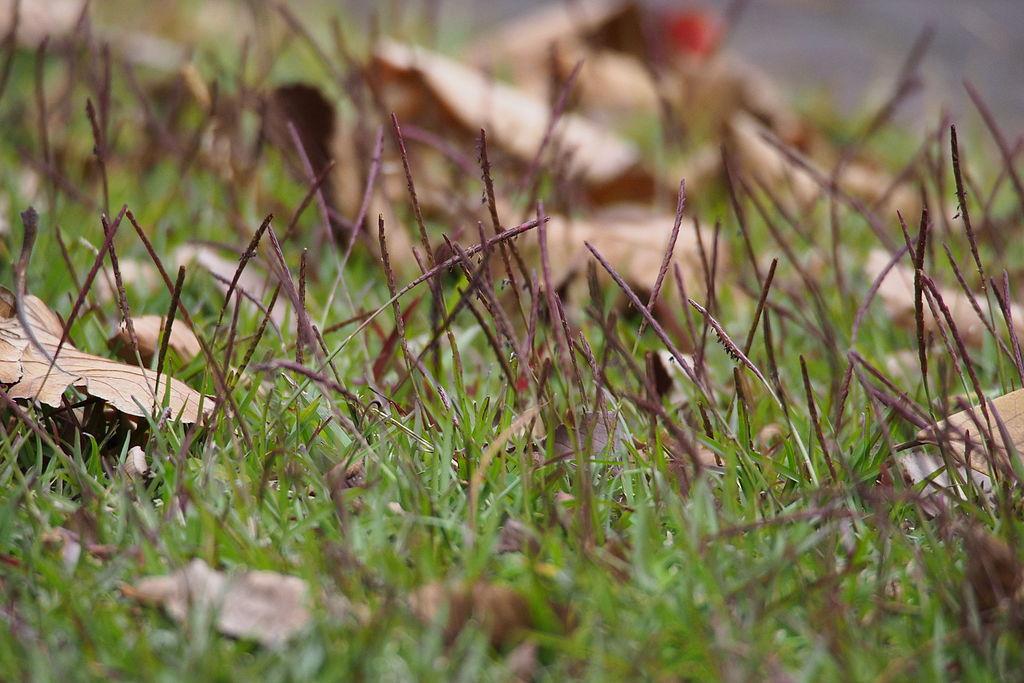
Centipede grass can thrive in high temperatures and requires very little upkeep.
The distinctive look of the small, upright stems that emerge from the stolons gives centipede grass its common name. Around the turn of the 20th century, people from Asia brought centipede grass to the US for the first time.
Since then, it has become very popular and widespread among homeowners and turfgrass enthusiasts in the United States. However, not everyone will appreciate the grass because it is sensitive to shadow and wear and tear.
Centipede grass requires at least six hours of direct sunlight per day to ensure healthy growth. It is not tolerant of soils high in phosphorus, heavy traffic, high soil pH, compaction, excessive thatch, drought, or heavy shade. However, it is very well adapted to environments with low fertility, takes very little maintenance, and can produce a dense, weed-free turf that is pleasing to look at.
So, is centipede the right choice for your lawn? Well, read on to find out!
A Quick Look At Centipede Grass
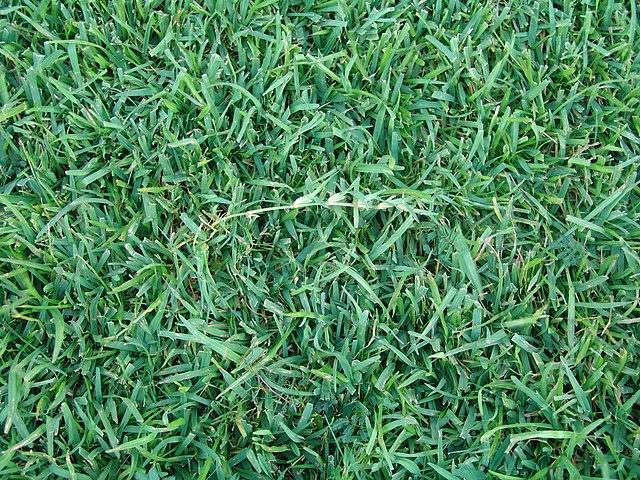
Centipede grass has good tolerance against drought despite its shallow root system.
Centipede grass needs as lawn grass are dictated mainly by climate and soil conditions. Warm winters provide the best conditions for it to thrive in the sandy and acidic soils of the Southeast, which extends from the Carolinas all the way to the Texas Gulf Coast.
The winters are too harsh for centipede grass to survive further north of this area.
Likewise, the soils of the American Southwest are too alkaline to support the growth of centipede grass in a healthy manner.
Here is a quick overview of some of the key features of centipede grass:
| Common Name | Centipede Grass |
| Scientific Name | Eremochloa ophiuroides |
| Plant Family | Poaceae |
| Native Region | China and Southeast Asia |
| Ideal Planting Months | May or June |
| Plant Type | Perennial |
| Hardiness Zones | USDA 7, 8, 9 and 10 |
| Mature Size | 3 to 5 inches |
| Mowing Height | 1 to 1.5 inch |
| Grass Color | Apple-green colored |
| Grass Texture | Coarse |
| Sun Requirements | At least six hours per day |
| Ideal Soil Type | sandy |
| Soil pH | Slightly acidic; 5 to 6. |
| Drought Tolerance | Good |
| Weed Tolerance | Moderate to Good |
| Disease Resistance | Moderate |
| Traffic Tolerance | Poor |
| Water Requirements | 1 to 1.5 inches per week |
| Fertilizer Requirements | Low |
| Shade Tolerance | Poor |
Related: Bermuda Grass Vs. Fescue Grass | What’s The Difference & Which Is Best?
How To Grow Centipede Grass?

Despite its modest growth rate, centipede grass still benefits from periodic mowing.
Growing centipede grass is as easy as planting a seed or laying down some sod, plugs, or sprigs. Seed at a rate of one-fourth to one-third of a pound per one thousand square feet.
The soil should be rolled with a lawn roller to achieve the best results. Be sure to lightly water the seeds, keep the soil moist, and follow the guidelines for establishing grass seeds. After planting the seeds, the germination process will take between 14 and 28 days.
May and June are the best months to sow centipede grass, as doing so later may increase its water needs and make it more vulnerable to cold damage later on.
Here are a few more tips for growing a healthy centipede grass lawn:
Make Note Of Your Local Climatic Conditions
The American Southeast, from the Carolinas to Florida and all the way up to the gulf coast of Texas, is a perfect place for centipede grass. If your plant’s growth rate is hovering towards the upper or lower limits of the acceptable range, you should consult the experts at your neighborhood garden center to determine what, if anything, you need to change.
Till The Soil Before Planting Grass Seeds
Before spreading centipede grass seed, the area in which it will be planted should first be tilled to aerate the soil. This will get the soil ready for when you plant the new seed. Also, use mulch for water retention. Mulching and tilling the soil will create ideal conditions for seed centipede grass germination and the establishment of a robust root system.
Test The Soil pH Before You Start
The ideal growing conditions for centipede grass are acidic soil, with a pH range of 5 to 6, which is significantly lower than that of many other grass species. Soil iron shortage might also impact your lawn’s development and leaf color if your soil pH is too high. In this instance, you can alter your soil to make it favorable for the growth of centipede grass.
Clear The Intending Plant Area For Sowing Seeds
Before planting the seed, you should clean the area you want to plant in of any weeds or old grass. This will begin with tilling, but in order to eradicate the previous growth, you’ll need to treat the region with a chemical herbicide to kill the old vegetation.
Fertilize Your Centipede Grass In The Spring
Early spring is the best time to do it when it comes to fertilizing your centipede grass lawn. (Fertilizing also aids in halting the development of crabgrass, a frequent weedy and invasive grass species.) Also, after the peak of the growing season has passed, it is also a good idea to apply another application of nitrogen-rich fertilizer to the soil in the autumn.
Take Care Of Your Centipede Grass In Winters
When compared to other kinds of turfgrass, such as Zoysia grass or Bermuda grass, centipede grass is distinguished by the absence of a seasonal hibernation period.
This indicates that it is vulnerable to harsh winters and that it will need considerable care and maintenance even during the warmer months of the year.
Trim The Grass Every Once In A While
Even though centipede grass grows more slowly than other types of grass, it is still a good idea to mow it sometimes. Ideally, you should strive to keep your lawn height within a range of one and a half to two inches at all times and mow accordingly.
Basic Centipede Grass Care
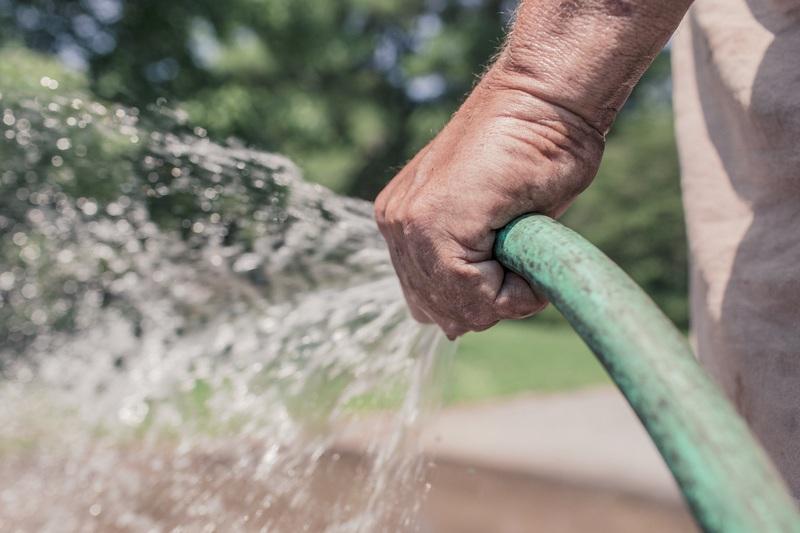
Areas with less than 40 inches of annual rainfall are ideal for growing centipede grass.
Since centipede grass develops at a sluggish rate, it is essential to keep weeds under control so that centipede grass can thrive. Also, keep in mind that centipede grass is particularly susceptible to some herbicides. Hence, it’s essential to check the label to make sure you’re using one that is compatible with this plant before you apply it.
Here are some basic care tips for a centipede grass lawn:
Fertilization
In most cases, an annual application of one pound of nitrogen per one thousand square feet of land is sufficient for the centipede grass.
A good rule of thumb is to split the total amount evenly across two or three applications: one in the springtime, another in the middle, and the last at the end of summer.
Compared to the majority of other turf grasses, centipede grass has a lower fertilizer need. Giving it more food than it requires may have a negative effect on the lawn, making it more susceptible to damage from freezing temperatures.
When the centipede grass turns a dark green instead of a medium to light green, it is usually an indication that the lawn is being over-fertilized.
Humidity & Temperature
Centipede grass thrives in climates that are hot and humid. It cannot withstand low temperatures. So, keep in mind that when the temperatures start to drop in the fall, it is not unusual for the centipede grass to start turning brown.
It will turn back to its green state as soon as the temperatures begin to rise in the spring or when there is an extended period of warm weather throughout the winter.
Hard freezes, on the other hand, especially if they happen more than once, can cause damage to the turf, which shows up as patches of dead grass in the spring.
This is especially true if the freezes occur repeatedly.
Watering
Centipede grass must be watered to depths between four and six inches when irrigated. A sparring and shallow watering will only result in the establishment of unattractive and shallow roots. Also, you will need to water your plants more frequently if you have sandy soil.
And although centipede grass thrives in regions that receive less than 40 inches of rainfall annually, it is susceptible to showing signs of water stress in dry environments. These symptoms include wilting and a change in coloration.
Soil
The dry soils in the southwestern part of the United States usually lack iron and are more alkaline, both of which are not favorable for the growth and development of centipede grass. This is the reason why centipede grass is not grown in those regions.
In addition, although centipede grass is not picky about the fertility of the soil, it does require a bare minimum of six inches of topsoil in order for it to be able to support the formation of healthy turf. For centipede grass, the perfect soil would be sandy and slightly acidic.
Also, before planting centipede grass, you should first test the pH of your soil to determine whether or not it needs to be acidified, as the grass does not grow well in soil with a high pH.
Light
In order to develop into a healthy turf, centipede grass requires unobstructed exposure to sunlight. It does not thrive in environments with a lot of shade and needs a minimum of six hours of direct sunlight per day to reach its full potential.
Mowing
You should begin mowing established centipede grass at the height of two inches in the spring. As the season progresses, you should gradually lower the cutting height in short cycles each time you mow to reach a final mowing height of between one and two inches.
After bringing the cutting height down, you should examine the grass. It should be returned to its previous height if it appears to be bald or scalped. Also, increase cutting height by 1/4 to 1/2 inch in the summer and fall to protect the grass.
Related: Grass Spiders: How To Get Rid Of Them? A Comprehensive Guide
Centipede Grass Pros & Cons
In my experience, the best grasses can be planted quickly and left alone for several years. One such grass is centipede grass. Centipede grass makes a great lawn in many settings, but it is essential to weigh all of the benefits and drawbacks before deciding if centipede grass is suitable for your yard or not. So, let’s get started:
Pros Of Centipede Grass
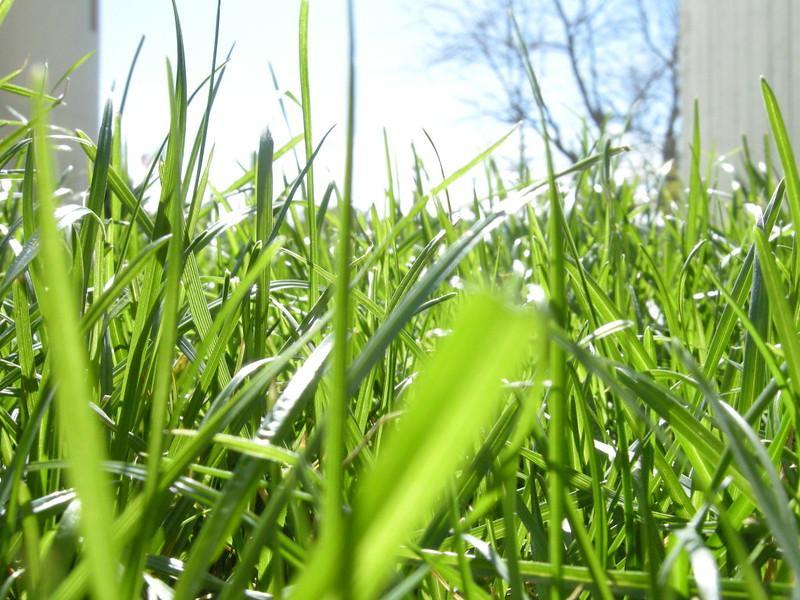
Centipede grass can smother other plants, such as weeds, due to its dense growth.
The vibrant green color of centipede grass makes it an appealing option for lawns, and there are many advantages to growing it. Take, for instance:
It Can Survive Even In The Hottest Months
Centipede grass, like many other grass species or types that grow best during the hot season, thrives in temperate climates and can survive even the hottest months. In addition, centipede grass is also able to survive in partly shaded conditions.
It Holds Well Against Weeds
Centipede grass can smother other plants due to its dense growth. This results in a reduced need for lawn maintenance activities such as the application of weed killers and manual weeding. Slow growth means less thatch, so dethatching is rarely needed.
It Needs Minimum Upkeep
Once centipede grass is established, it needs only water and well-draining soil to thrive.
If the climate is warm enough, it can live through several winters without experiencing any significant issues. Moreover, it spreads by stolons, which are above-ground stems, and grows slowly, so it needs mowing less frequently than some other plant species.
It Is Well-Suited To Sandy Soils With Low Fertility
Even if you have poor soil, as long as it drains effectively and the temperatures are warm, you can create a healthy centipede grass lawn with a beautiful light green color.
However, if you have heavy clay soil, you should avoid planting centipede grass because it is not particular about anything else other than having wet roots.
It Is Drought Tolerant
This grass requires at least one inch of rainfall every week in order to thrive, although it can go for several weeks without being watered if needed.
However, if a drought lasts more than three to four weeks, you should water your lawn to prevent it from becoming damaged and brown.
Cons Of Centipede Grass
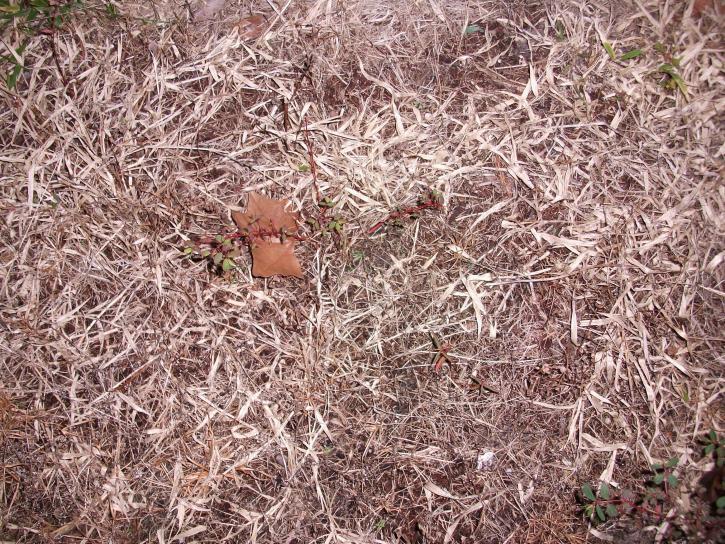
Temperature drops in September may cause centipede grass to turn brown.
Consider the following drawbacks of centipede grass before deciding whether or not to plant it in your backyard. They might be a deal breaker for some!
It Does Not Hold Well Against Foot Traffic
The centipede grass does not respond well to people walking on it. It is a slow-growing plant, so if it is stomped on too frequently, it will die and take a very long time to recover.
It Does Not Do Well In Shade
While centipede grass can tolerate some shade, it cannot withstand too much of it or suffer considerable damage. Full sun exposure is ideal for the growth of centipede grass.
It Turns Brown In Winter
Centipede grass may start to brown in September when temperatures drop. As winter progresses, it turns brown till next spring. This can make your yard ugly for half the year.
Related: Ryegrass Pros & Cons: Is Ryegrass Worth It? | A Guide To Growing Ryegrass
Centipede Grass | Common Pests & Diseases
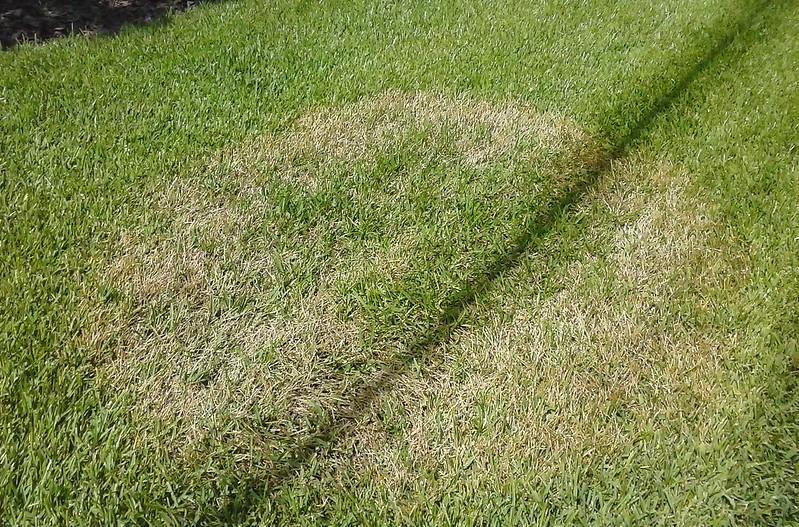
Brown patch disease affects many types of lawns, although it is especially dangerous to centipede grass.
Centipede grass decline can have an impact on older, well-established turf. The symptoms of this condition include areas of grass that do not become lush in the spring and, ultimately, perish. The disease is brought on by a soil pH that is higher than 6.0, an excessive application of nitrogen fertilizer, a lack of dethatching, and water stress.
However, the most typical problem is a huge patch, also known as brown patch disease.
It is brought on by a wide range of circumstances, the most common of which are an excess of water or nitrogen fertilizer, inadequate drainage, a thatch layer that is thicker than half an inch, springtime soil temperatures ranging from 40 to 70 degrees Fahrenheit, and cool weather in the fall and winter. It is a fungal disease that manifests itself gradually but has the potential to devastate swaths of grass up to twenty feet in diameter.
Specialized fungicides are available for their treatment; however, applying them in the fall when temperatures are at or below 70 degrees Fahrenheit is essential.
Centipede Grass Lawn Care Schedule
The following schedule for maintaining centipede turf grass can be applied to turf planted everywhere in the United States; however, specific management procedures may need to be modified to account for differences in temperature and geography of the area.
From January To April
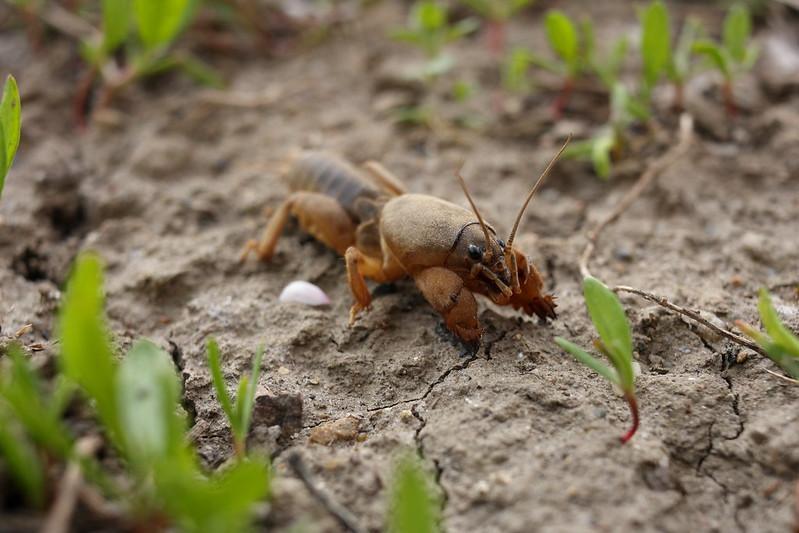
Mole cricket activity increases in warm springs. During this time, pesticides can reduce the population.
Watering
Water the lawn during dormancy to protect your grass from dehydration. Monitor winter rainfall and water the grass if none falls for 3 to 4 weeks.
This is significant if warm, light days precede low 20s or colder days. The extra soil moisture will keep turf growing points warmer, minimizing crown death.
Also, know the top foot of soil texture to manage a lawn. Sandy soils dry out quickly. Therefore, they don’t hold moisture well. Clay soils retain water longer.
So, clay soil shouldn’t be very damp as wet soil all winter can bring several problems.
Fertilization
The results of a soil test should be used to guide the fertilization of centipedegrass, and now is an ideal time to do such a test. Nevertheless, using fertilizers that include a higher nitrogen ratio is not recommended during this time.
If new growth is stimulated by fertilization in the early spring, and then that growth is followed by a late frost, the lawn may sustain considerable damage.
Insect Control
Cold winters keep insects at bay. However, a warm spring can boost mole cricket activity. During this time, pesticide treatments can lower heavy populations.
Apply an insecticide if mole cricket damage is excessive. Wait, if the damage is minimal. Cool soil temperatures and limited insect activity make this a bad time to apply a pesticide.
If grubs were an issue in previous years, cut and peel back a square foot of sod. Apply a grass insecticide labeled for grub control if more than six are found under the sod.
Weed Control
Apply post-emergent herbicides to control broadleaf and grassy weeds. Post-emergent herbicides should not be applied during spring green-up.
If warmer temperatures cause a weed problem and the grass has started to green, wait until the grass is fully green to apply a post-emergent herbicide.
Meanwhile, weed and bag. Pre-emergent can also be used. The best time to apply them is mid-February in coastal, central, and piedmont/mountain locations. However, a second spray 8 to 10 weeks following the first is needed to manage warm-season weeds.
Aeration
Once the fear of frost has gone, and the lawn has greened up, aerification and dethatching can be combined to relieve soil compaction. If you have issues with infiltration and drainage, this will assist fix them. However, if a pre-emergent herbicide was administered from late February to mid-March, delay this until shortly before the following application.
Pre-emergent herbicides act as a barrier, preventing weed seeds from developing.
And disturbing the soil lets weeds through.
Thatch Removal
Dethatchers or vertical mowers can remove thatch. When centipedegrass thatch is over 1/4 inch, dethatch. Use a dethatcher with 2- or 3-inch blade spacing and 14-inch depth.
A 1-inch-spaced power rake can cause considerable lawn damage. Use a bagged lawn mower or hand rake to collect and dispose of turf debris.
Mowing
Mow the lawn lower than in summer. Set the mower to 1 inch. However, setting the mower too low could scalp the lawn. It’s best to trim the grass back to this height in the weeks leading up to the lawn’s typical greening-up period, which begins in late April or early May.
Initial green-up can, however, vary. In coastal and southern South Carolina, this occurs in April; inland, it may be mid-May. Late season frosts can burn back centipede grass numerous times in late winter or early spring. Use a bagger to collect clippings and remove dead winter stuff if possible. Sharpen mower blades.
From May To August
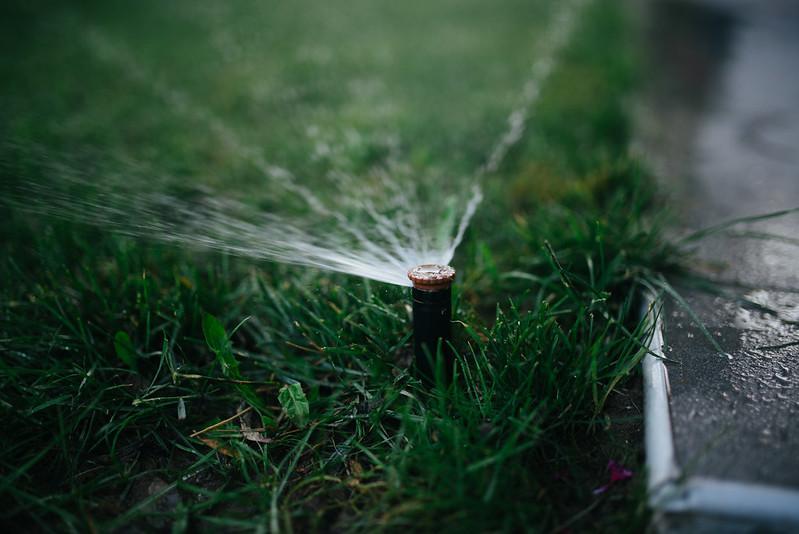
Water it the following day when the entire lawn looks dry in summer.
Weed Control
Pre-emergent herbicides sprayed in the late winter or early spring will significantly limit weed growth in the following summer. If a pre-emergent herbicide isn’t administered in the spring, post-emergent herbicides will be needed. If the temperature is over 90°F, don’t apply herbicides. Don’t mow three days before or after the application.
Weed identification is crucial for pest control. Spurge and annual lespedeza are controlled using a broadleaf weed herbicide containing 2,4-D, dicamba, and mecoprop.
Control crabgrass, goosegrass, and sand spurs with sethoxydim. Imazaquin controls sedges or nut grass. Follow package guidelines when using 2,4-D on centipede grass.
Disease Control
Brown patches are the most frequent centipede grass disease. Large patches are spring and fall fungal diseases. Because it’s fed by moisture, use correct watering practices. Water management and thatch control are crucial to preventing huge patches.
If the grass stays damp, yellow-to-brown circles may form and enlarge.
And, in badly infested turf, the rings may not be spherical.
Insect Control
Various insects attack centipede grass in the summer. Many pests, including nematodes, grubs, mole crickets, spittlebugs, ground pearls, and more, can cause extensive harm.
If one of these insects was an issue early in the season, apply a pesticide in mid-July. Each pest is managed using cultural and chemical treatments.
An insecticide spray focused on nymphs is the most effective control. It’s crucial to diagnose an insect problem and use the suitable insecticide correctly.
Watering
Water the grass to relieve the strain of a drought. Assess the lawn’s irrigation needs regularly. When the entire lawn looks dry, water it the following day. Daily grass inspections can help. As the grass dries, it turns bluish. The irrigation interval varies by site and soil type. Irrigate turfgrass “deeply and infrequently” as it promotes deep roots.
Fertilization
Established centipedegrass shouldn’t get phosphorus unless a soil test shows deficiency. Centipede lawns need 1 to 2 lbs. of nitrogen per 1000 sq. ft. Centipedegrass yards on sandy soils may be fertilized at a higher rate than those on clay.
Soil tests should guide fertilizing of the lawn. Soil pH of 5.5 to 6.0 is ideal for centipedegrass. A higher pH can be lowered with sulfur. However, you should only apply sulfur to the lawn when temps are below 75°F. Large pH changes may take years.
Early Summer Fertilization
After the lawn has fully greened up in May, apply 1/2 to 1 pound of nitrogen per 1,000 square feet. The rate will vary depending on the type of soil. Furthermore, a soil test will indicate if phosphorus fertilizer is needed for optimum turf development.
Late Summer Fertilization
Fertilize with 1/2 to 1 pound of nitrogen per 1,000 square feet of high potassium soil. Last fertilizer application: August 15 in the Upstate, September 1 along the coastline. Potassium is also needed as grass enters dormancy for disease prevention and winter hardiness.
From September To December
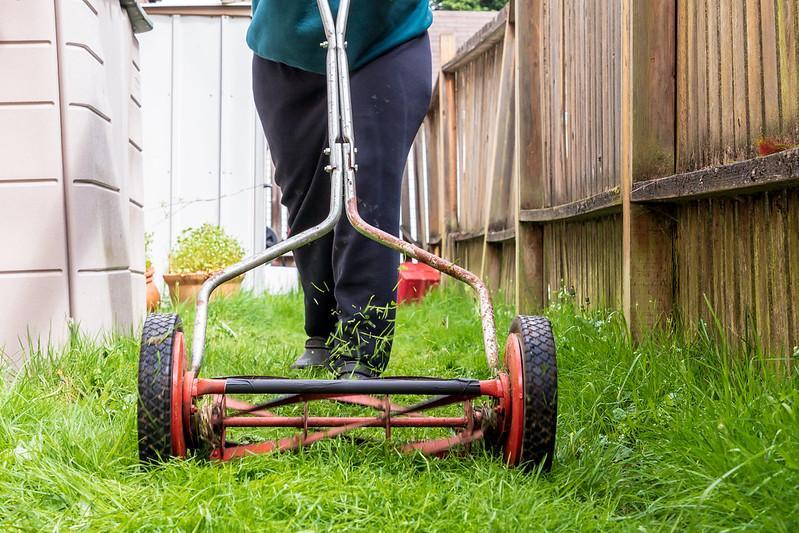
Once overnight temps fall below 70°F, raise the mower blade 2 inches to expose more leaves.
Weed Control
Applying a pre-emergent pesticide in September and again 8 to 10 weeks later can control many weeds. Apply the product according to the label instructions. After applying granular herbicides, irrigate the soil. Centipede grass is sensitive to 2,4-D.
So, apply less of it with caution. If needed, reapply in 10 to 14 days. Winter pesticides can also be used to manage annual bluegrass and other grassland weeds.
Disease Control
Fall fungicide treatments are crucial for brown patch disease management. Warm temperatures and significant rainfall in September can spread infections quickly.
Furthermore, cooler nights and shorter days delay turf healing, making control difficult.
Fall-weakened turf will recover slowly in the spring. Therefore, fungicides must be applied before the grass goes dormant. In areas where brown patch disease occurs annually, prophylactic fungicide sprays may be recommended in early October.
Insect Control
Any insects that were not observed while they were in the nymphal stage throughout the summer will have matured to the point where they are causing damage.
Applying an insecticide will help limit the population of pests and prevent additional harm to the lawn. It is ideal for getting this done before the season’s first frost.
Watering
Continue to water the grass even though there has been no rain in order to avoid the effects of drought. Furthermore, after the lawn has entered its dormant phase, water it as necessary to prevent it from being overly dehydrated. This is crucial if days expected to be in the low 20s or lower come after days of warm, sunny weather.
Fertilization
Do not apply nitrogen. Soil tests may propose adding lime or sulfur. Potash, or potassium, can also be used to improve winter hardiness if a soil test shows insufficient levels.
Mowing
Continue cutting centipedegrass at the standard height until fall. Once overnight temperatures fall below 70 °F, elevate the mower blade height to 2 inches to expose more leaves.
This will allow the turf to adapt before the first frost.
Final Thoughts
Among lawn grass options, centipede grass stands out for its robust growth even in hotter climates and its little care requirements. The centipede is distinguished by its compact growth pattern as well as its preference for sandy or well-drained soil.
In addition to this, it has a verdant, light green color. It wasn’t until the early 1900s that centipede grass made its way from Asia to the United States.
Today, however, the grass has become an integral part of many lawns and turf grass spaces around the nation. Still, the grass is not for everyone as it is not able to withstand a lot of shadows and cannot tolerate high foot traffic.
Frequently Asked Questions (FAQs)
What are the pros and cons of centipede grass?
Here are the main pros and cons of using centipede grass in a yard:
| Pros | Cons |
| The grass can survive even in the hottest months. | Centipede grass cannot handle heavy traffic. |
| Centipede grass is very drought tolerant. | It is not very tolerant of shade. |
| Centipede grass requires minimal upkeep. | Centipede grass turns brown in winter. |
| It can thrive in low-fertility, sandy soils. | It demands the use of a lot of water. |
What is the best time to plant centipede grass?
The end of spring or the beginning of summer is ideal for planting a lawn of centipede grass. Centipede grass is a warm-season grass. Thus the soil must be good and warm (at least 70 degrees Fahrenheit) before seeds sprout.
What is the difference between centipede and Bermuda grass?
Centipede grass is lighter in color and has a decent texture. It thrives in high temperatures and can withstand drought for extended periods of time without losing its color.
In contrast, Bermuda grass is coarser and darker in color. Also, germination of Bermuda Grass can take up to 21 days, while that of Centipede Grass can take up to 28 days.
Is St Augustine or centipede better?
Is St. Augustine better than centipede depends on what you aim to achieve with your lawn. For instance, centipede grass can withstand higher temperatures than St. Augustine grasses can, but it can’t handle as much shade. St. Augustine grass is, therefore, a better option for lawns with a lot of shade. Whereas, Centipede grass is best suited for lawns where temperatures can be really high in the summer.
Will centipede grass choke out weeds?
Centipede grass is noted for its resistance to drought and capacity to choke out minor weed invasions without using chemical herbicides. And good growing practices that encourage healthy centipede grass are the first line of defense against weeds.
Sources for Further Reading
Centipedegrass Yearly Maintenance Program. (2022). Clemson University Cooperative Extension Service. Retrieved October 5, 2022, from https://hgic.clemson.edu/factsheet/centipedegrass-maintenance-calendar/
Centipede Grass – Valdosta State University. (2022). Retrieved October 5, 2022, from https://www.valdosta.edu/administration/finance-admin/plant-ops/campus-plants/centipedegrass.php
Centipedegrass Decline. (2022). The University of Georgia. Retrieved October 5, 2022, from https://extension.uga.edu/publications/detail.html?number=C1003&title=centipedegrass-decline
Editor’s Recommendations
Zoysia Grass 101: How To Grow A Healthy Zoysia Grass Lawn & What Are Its Pros & Cons?
Common Lawn Pests & How To Get Rid Of Them | The Ultimate Guide
Lawn Mowing Pattern & Techniques | Cut Your Grass Like A Pro







